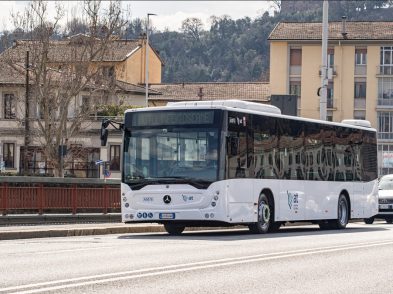Renaissance
humanist Laura Cereta must be rolling in her grave. More than 500
years after the Brescia native helped lay the groundwork for modern
feminism by championing women’s right to education, Italy ranks
among the lowest in the EU for gender equality.
The
numbers are grim. Only 45 percent of Italian women work outside the
home-well below the European average. Last year, Italy placed 74th
in the World Economic Forum’s Global Gender Gap Report, behind
countries like Kazakhstan and Malawi, marking a two-point drop from
2009 (Anglo countries all ranked within the top 23). While in Italy
university-educated women exceed men by 10 percent (and the rest of
Europe by 2 percent), once these women enter the workforce they earn
on average half the amount of their male counterparts and only 7
percent of them occupy managerial positions. This percentage
increases in the political arena, but not by much: Italian women
occupy 11.5 percent of the seats in the lower house and 8.9 percent
in the Senate, thus placing Italy 89th in the Inter-Parliamentary
Union’s global classification of women in parliament.
Certainly,
the seeds of Italian feminism augured a vastly different future. As
Sarah Gwyneth Ross argues in her 2009 book The
Birth of Feminism,
fifteenth-century Italian female intellectuals such as Cereta did
nothing short of pave the way for the modern women’s movement. The
first woman in the world to receive a university degree (in Padua in
1678) was also Italian, the Venice-born Elena Lucrezia Cornaro
Piscopia (1646-1684).
However,
by the time the western world was riding the first wave of feminism
at the turn of the twentieth century, Italy had fallen pitifully far
behind. Despite the efforts of suffragette and pioneer Italian
feminist Anna Maria Mozzoni (1837-1920), women in Italy were among
the last in Europe to be granted the right to vote, on February 1,
1945.
Italian
women got some of their feminist groove back during la
seconda ondata of the 1960s and 70s. Then as now, feminist activism in Italy was
intertwined with leftist politics and philosophy. Indeed, key early
collectives include the Movimento per la liberazione della donna,
established in 1969 in association with the Radical Party, and Lotta
femminista, founded in 1971 with ties to the student movement and
Marxism.
In
1970, prominent activists Carla Lonzi, Carla Accardi and Elvira
Banotti drafted the Manifesto di Rivolta Femminile in which, among
other things, they invited women to join them in ‘spitting on
[misogynist German philosopher] Hegel.’ Not surprisingly, the
rallying cry of second-wave feminists in this most Catholic of
countries revolved primarily around divorce and abortion, which were
legalized in 1974 and 1981, respectively, thanks to their struggles.
While the personal became political in Italy, its ‘trade-union
feminism’ set it apart from Anglo countries, as did the focus on
the differences between the sexes.
The
movement virtually disappeared by the early 1980s according to Bianca
Beccalli, author of the 1994 essay ‘The Modern Women’s Movement
in Italy.’ By that time, however, another group had emerged around
the Milanese Libreria delle Donne, founded by Luisa Muraro and Lia
Cigarini. Carrying forward the banner of gender differentiation, this
woman-centered publishing initiative has remained synonymous with
Italian feminism ever since.
Today,
30 years after their Big Victory, the legalization of abortion,
Italian feminists find themselves in what journalist Caterina Soffici
calls ‘the most sexist country in Europe’ in the subtitle of her
2010 book Ma
le donne no; and what Newsweek has nicknamed ‘Bunga-Bunga Nation,’ in reference to the
misogynist antics of Prime Minister Silvio Berlusconi, currently on
trial for paying an underage prostitute for sex.
How
did they get here? Many share the opinion of Nicoletta Dentico, one
of the organizers of the Se
non ora quando protests of February 13. As she told www.Slate.fr, while Berlusconi
has certainly played a major role, older Italian feminists are also
to blame for ‘closing themselves off in separatism’ and failing
to involve new generations. In fact, one thing young Italian women
share with their Anglo sisters is the stereotypical view of feminists
as humourless, man-hating hags. However, one glaring difference
overshadows such a similarity: most girls in the US or the UK don’t
dream of becoming television showgirls when they grow up.
It’s
as though female progress in Italy were frozen in the early 1980s.
Sure, Italian women are free to divorce, access contraception, get a
legal abortion and at least try to follow their chosen career path.
Perhaps journalist Marina Terragni was right to criticize politician
and fellow feminist Emma Bonino for lumping Italy together with third
world countries at the recent Women in the World Summit in New York.
On the other hand, what other first world nation would fail to
include a single woman among 42 discussion-table participants for its
upcoming World Expo Milan 2015 whose theme is feeding
the planet?
One
thing that could be holding Italian feminism back is the same thing
afflicting the Left in Italy: a woeful lack of unity. Everyone agrees
on the problems: the overwhelming concentration of power in the hands
of old men and a media that has muted women’s voices. The solutions
are another story.
From
the outside, the February 13 protests, for which 1 million marchers
turned out in Italy alone, finally seemed to have awoken the
‘sleeping dragon of Italian feminism,’ not to mention attracting
new legions of male supporters in the process. Yet even this
ostensibly unifying and successful event has split Italian feminist
opinion. Some, like femminista
storica Lea Melandri, believe the protests marked a hopeful turning point by
bringing women’s issues back into the Italian media.
Others,
like Lorella Zanardo, the creator of the book, film and blog Il
corpo delle donne,
are not so convinced. ‘I must say there was an amazing energy at
the protest [in Florence],’ she says. ‘But two months have
passed, and nothing has happened. In the 70s, we had the satisfaction
of knowing that political parties listened to our critiques and made
changes. Today, despite a million people expressing their
dissatisfaction, the PD [Partito Democratico] has done nothing.
Personally, I no longer expect a thing.’
Instead,
Zanardo is concentrating on one thing Italy has long done well:
educating its women. As a former member of that lucky 7 percent-she
has worked as a manager for various multinationals-she now devotes
herself to teaching young Italian women how to increase their
self-esteem. ‘I am seeing so much energy in the schools. The girls
and boys of today are different; they’re better. So I am working
for them.’ At least about this, Laura Cereta would be proud.







